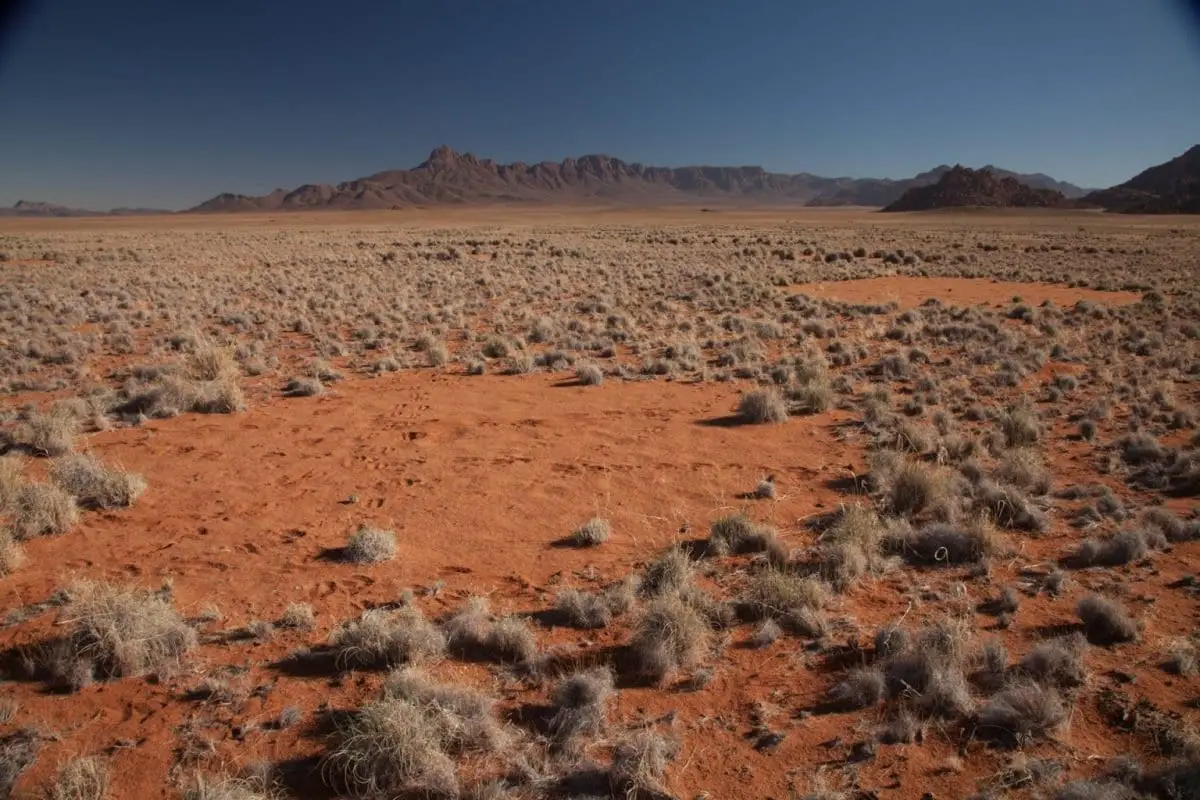One of nature’s greatest mysteries – the ‘Fairy Circles’ of Namibia – may have been unravelled by researchers at the University of Strathclyde and Princeton University.
The cause of the circular patches of earth surrounded by grass, which are arranged in honeycomb-like patterns in huge areas of the Namib desert, has been the source of scientific debate for decades. The new research, published today (Thursday 19 January) in scientific journal Nature, suggests that the interaction between termite engineering and the self-organisation of vegetation could be jointly responsible for the phenomenon.
Regular vegetation patterns form spectacular landscapes across the globe, with the Fairy Circles in Namibia holding special interest for scientists since the 1970s. Some have argued that termites alone create these patterns by destroying vegetation to reduce competition for water, while others have suggested the circles follow patterns of rainfall and are solely caused by competition between plants.
The newly-published findings show that Fairy Circles may actually result from the close interaction between both termites and vegetation, which facilitates their mutual survival.
Dr Juan Bonachela from the University of Strathclyde’s Department of Mathematics and Statistics, said: “There have long been two theories on how these regular patterns, and especially Fairy Circles, are formed, and both theories are normally presented as mutually exclusive.
“Our findings harmonise both theories and find a possible explanation for regular vegetation patterns observed around the globe. In the case of Fairy Circles, termites remove vegetation on their mounds to increase moisture, which is essential for the insects’ survival in dry environments, thus creating the bare disk. Vegetation around the mound takes advantage of this water accumulation to grow, and this taller vegetation forms the circle. Regular repetition of the pattern results from different termite colonies competing next to one another.
“This behaviour affects the whole ecosystem, allowing it to survive harsher conditions and recover from droughts much more quickly than if there were no termites.
“The Fairy Circles remind us of the delicate balance of interactions necessary to sustain ecosystems.”
The findings come as a result of an international collaboration between academics at Princeton and Strathclyde, which allowed researchers to use their different expertise to develop and test the theory.
Their multidisciplinary approach included field data from four different continents and computer simulations. Thanks to the latter, the authors were able to explore their theory on a variety of scales, testing different environmental scenarios, which would have been almost impossible to achieve on ground due to cost and time issues.







